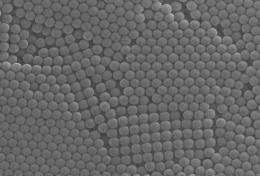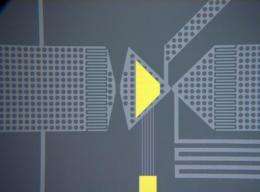New instrument keeps an 'eye' on nanoparticles

Precision measurement in the world of nanoparticles has now become a possibility, thanks to scientists at UC Santa Barbara.
The UCSB research team has developed a new instrument capable of detecting individual nanoparticles with diameters as small as a few tens of nanometers. The study will be published on line this week by Nature Nanotechnology, and appear in the April print issue of the journal.
"This device opens up a wide range of potential applications in nanoparticle analysis," said Jean-Luc Fraikin, the lead author on the study. "Applications in water analysis, pharmaceutical development, and other biomedical areas are likely to be developed using this new technology." The instrument was developed in the lab of Andrew Cleland, professor of physics at UCSB, in collaboration with the group of Erkki Ruoslahti, Distinguished Professor, Sanford-Burnham Medical Research Institute at UCSB.
Fraikin is presently a postdoctoral associate in the Marth Lab at the Sanford-Burnham Medical Research Institute's Center for Nanomedicine, and in the Soh Lab in the Department of Mechanical Engineering at UC Santa Barbara.

The device detects the tiny particles, suspended in fluid, as they flow one by one through the instrument at rates estimated to be as high as half a million particles per second. Fraikin compares the device to a nanoscale turnstile, which can count –– and measure –– particles as they pass individually through the electronic "eye" of the instrument.
The instrument measures the volume of each nanoparticle, allowing for very rapid and precise size analysis of complex mixtures. Additionally, the researchers showed that the instrument could detect bacterial virus particles, both in saline solution as well as in mouse blood plasma.
Provided by University of California - Santa Barbara


















